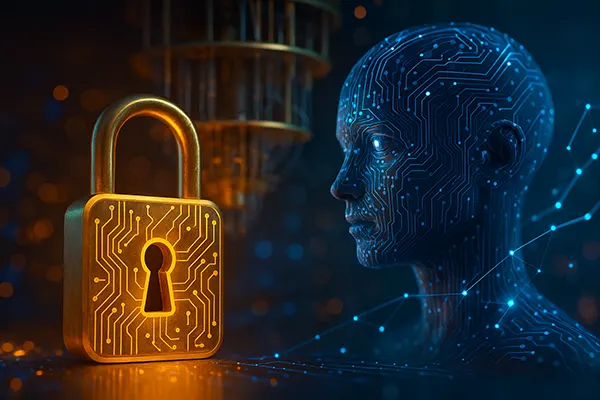Quantum Security in the AI Era: How New Encryption Algorithms Are Transforming Cybersecurity

The rise of quantum computing and artificial intelligence has introduced both opportunities and unprecedented risks in the world of digital security. As these technologies mature, traditional cryptographic methods face significant threats, pushing researchers and organisations to adopt advanced encryption strategies. Quantum-resistant algorithms are now at the forefront of protecting sensitive information against future computational capabilities.
The Quantum Threat to Classical Cryptography
Quantum computers, particularly those with fault-tolerant architecture, are predicted to break widely used encryption methods like RSA, ECC, and DSA. These methods rely on mathematical problems—such as integer factorisation and discrete logarithms—that can be solved exponentially faster using quantum algorithms like Shor’s algorithm. This means that encrypted communications and stored data could become vulnerable once sufficiently powerful quantum machines are available.
Although large-scale quantum computers are not yet operational, “store now, decrypt later” attacks are a growing concern. Malicious actors may already be collecting encrypted data to decrypt in the future when quantum capabilities become available. This highlights the urgency of transitioning to quantum-safe encryption before it’s too late.
Governments and institutions are taking proactive steps. For example, the US National Institute of Standards and Technology (NIST) has initiated a post-quantum cryptography (PQC) standardisation process. Several promising algorithms have already emerged from this initiative and are set to replace vulnerable protocols.
Examples of Quantum-Resistant Algorithms
Kyber, a lattice-based algorithm, is one of the most notable candidates. It offers fast performance and robust resistance to quantum attacks, making it ideal for securing internet traffic. Kyber has been selected by NIST for standardisation as part of their PQC suite.
Another example is Dilithium, a signature scheme that also relies on lattice cryptography. It provides digital signatures with strong resistance against both classical and quantum threats, crucial for ensuring data integrity and authenticity.
Besides lattice-based schemes, code-based and multivariate polynomial cryptographic approaches like Classic McEliece and Rainbow (although recently deprecated) have also been explored. Each method offers unique trade-offs in terms of key size, performance, and implementation complexity.
The Role of AI in Enhancing Quantum-Resistant Security
Artificial intelligence contributes to quantum-safe cybersecurity in two key ways: threat detection and algorithm optimisation. AI models are capable of identifying unusual network behaviour, which may indicate a novel or sophisticated attack. These detection systems are continuously learning, adapting to new threat vectors in real time.
On the algorithmic side, machine learning can help optimise cryptographic protocols for better performance and resilience. AI can simulate potential quantum attacks and stress-test new encryption schemes under different conditions, accelerating the development of robust defences.
Moreover, AI helps in managing cryptographic agility. As new algorithms are adopted, systems must transition quickly and securely. AI tools can automate aspects of this migration, ensuring that vulnerabilities don’t arise during the changeover period.
Challenges in AI-Driven Cryptography
Despite its potential, AI itself is not immune to risks. Adversarial machine learning, model poisoning, and data manipulation are real concerns. These threats can undermine AI-driven security tools if not carefully addressed during development and deployment.
There’s also a need for explainability. Many AI systems, particularly deep learning models, act as “black boxes,” which complicates their use in critical security infrastructure. Transparency and auditability are essential for gaining trust and regulatory approval.
Lastly, integrating AI with cryptographic functions requires interdisciplinary expertise. Teams must combine knowledge from computer science, cryptography, and AI to build reliable hybrid solutions that withstand both classical and quantum threats.

Global Response and Standardisation Efforts
Governments, academic institutions, and the private sector are collaborating to create quantum-secure ecosystems. The European Union has initiated the European Cybersecurity Industrial, Technology and Research Competence Centre (ECCC), promoting research into quantum-safe technologies.
Major tech companies like IBM, Google, and Microsoft are investing heavily in both quantum computing and cryptography. IBM has already deployed prototype systems using post-quantum algorithms in cloud infrastructure, while Google is researching hybrid approaches that combine classical and quantum-resistant encryption.
On a national level, countries are updating their cybersecurity strategies to reflect post-quantum readiness. The UK’s National Cyber Security Centre (NCSC) has published guidance encouraging early adoption of PQC for critical sectors like defence, finance, and healthcare.
Steps Toward Organisational Readiness
To prepare for the quantum era, organisations should begin by conducting cryptographic inventories. Identifying where and how encryption is used across systems is essential for risk assessment and migration planning.
Next, entities should pilot quantum-safe algorithms in non-critical environments. This allows for testing and optimisation before full-scale deployment, reducing operational risk and avoiding service disruption.
Finally, collaboration is key. Participation in global standards bodies, academic consortia, and industry forums helps organisations stay informed and shape the future of cybersecurity in the quantum era.




